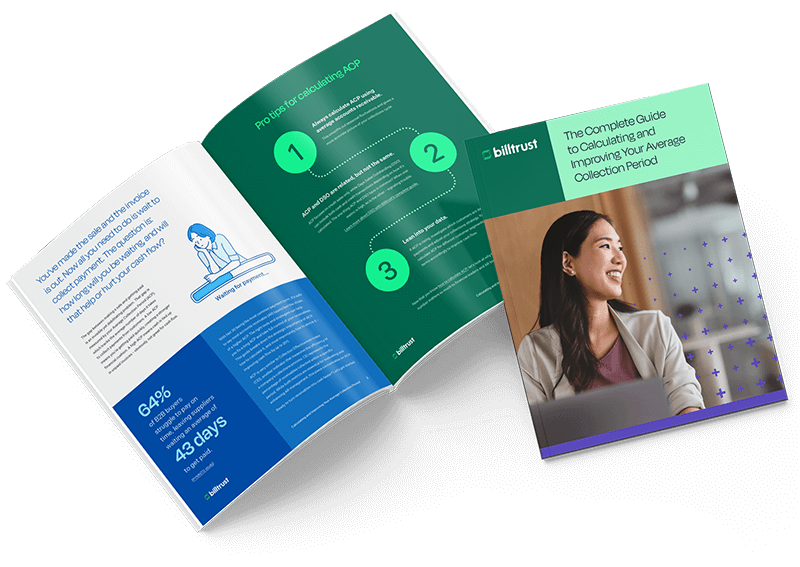In today’s world of B2B payments, Net 30 rarely means 30 days. Studies show suppliers wait an average of 43 days to get paid, with more than 60% of B2B buyers struggling to meet payment terms.
This isn’t an inconvenience – it’s a crisis. Late payments are one of the leading causes of cash flow disruption. In Europe, they’re responsible for 25% of all bankruptcies. In the U.S. 19 industries had payments 91 days past due in 2024. The longer it takes to collect, the more organizations are forced into difficult tradeoffs like tapping credit lines to cover expenses, delaying growth initiatives, and spending valuable time chasing payments they should already have.
This is exactly why 75% of finance leaders now recognize accounts receivable (AR) as a strategic priority, and why Billtrust released its latest guide for finance and AR leaders to improve their Average Collection Period (ACP).

If you want to get smarter with your collections, it makes the most sense to start by focusing on the number that tells you how fast you're actually turning invoices into cash: ACP. It’s one of the clearest indicators of how much control you truly have over your receivables, and how much risk may be hiding in plain sight. A low ACP means you’re collecting payments quickly and keeping cash flowing. A high ACP means cash is tied up in unpaid invoices, putting corporate finance health in a pressure cooker.
Finance teams know their ACP but aren't strategically managing it
Ask yourself:
- Are you merely tracking ACP or are you managing it proactively, using it as a strategic lever for cash control and risk mitigation?
- Is ACP isolated to accounts receivable, or is it tied to other areas of the business to drive broader impact?
- Do you understand what’s causing your ACP to rise? (i.e. misaligned payment terms, changing customer behaviors, or process bottlenecks)

If you want to shrink the gap and accelerate B2B payments, Billtrust’s guide offers key insights and strategies to make it happen:
1. Collect on your accounts more efficiently
Turn ACP from a passive report into an active tool that informs smarter policies, risk protection, and collections while improving the customer experience.
2. Master the math behind ACP
Learn exactly how to calculate ACP, plus pro tips that will change how you monitor it and use it to drive better financial performance.
3. Improve cash flow with early payment discounts
Research shows that 80% of early payment discounts go unclaimed, yet the savings potential can quickly add up to six or seven figures annually. The faster you pay, the more you can capitalize.
4. Shrink your ACP, shrink your fraud risk
Slow collections unfortunately open the door for payment fraud schemes like invoice tampering and bank detail scams. In 2024 alone, 60% of companies were impacted by payment fraud with an average loss of $100,000 per incident. Lowering your ACP is one of the simplest ways to close that door.
5. Don’t stop at collections
Drive measurable improvements across your entire AR ecosystem. Discover key strategies that help reduce Days Sales Outstanding (DSO) by up to 50%, improve payment matching accuracy by up to 95%, increase productivity by up to 80%, and cut payment processing costs by up to 30%.
Two key strategies highlighted in our guide
- Automation: Thirty-five percent of companies still rely on manual AR processes that delay payments by 40-85% compared to companies that use accounts receivable automation. If you’re not automating at least some of your AR processes, now’s the time to get on board.
- Customer communications: Studies show that even one weekly text reminder improves timely B2B payments. Get proactive with communications and use automation to your advantage.
ACP and B2B payments are things you can influence
Average Collection Period is one of the clearest opportunities to control B2B payments, cut costs, and strengthen financial stability.
Explore our guide for more key insights and strategies to shrink your ACP, strengthen cash flow, and turn collections into a strategic advantage.



